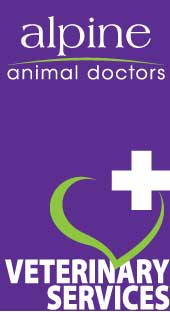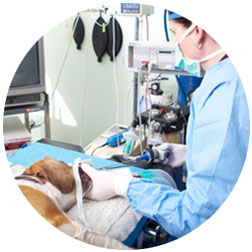alpine animal doctors veterinary services
ENDOSCOPY

For more information or to make an appointment for this service please call...
5756 2444
- Monday: 8.30 to 5.30
- Tuesday 8.30 to 5.30
- Wednesday: 9 to 1
- Thursday: 8.30 to 5.30
- Friday: 8.30 to 5.30
- Saturday: 9 to 1
- Sunday: Closed
7047 Great Alpine Road,
Porepunkah, VIC 3740
Endoscopy at Alpine Animal Doctors
Unlike people, our patients can never tell us how they’re feeling, and we can’t ask them where it hurts. For a veterinary clinic that means having every possible diagnostic tool available to us becomes far more important than it might be to your own GP. At Alpine Animal Doctors we are not limited to the usual ultrasound and x-ray facilities found at most vet clinics. Our patients also have access to leading edge diagnostic facilities, including endoscopy and arthroscopy.
Basically, endoscopy allows us to look inside your pet’s body without the need for invasive surgery. The device we use — an endoscope — has either a rigid or flexible tube — which can be as long as two metres to travel the full length of your pet’s intestines — a light to illuminate the area we are examining, a lens and an eyepiece.
Depending on the procedure additional instruments such as grasping forceps, snares and biopsy forceps can be fitted. We can also fit tiny video cameras that allow us to watch our journey through the innards of your pet on a monitor.
We use endoscopy in conjunction with pathology analysis, radiography and ultrasound to help us make a definitive diagnosis and to formulate a treatment/therapeutic plan for the patient. Using endoscopy we can closely examine the oesophagus, stomach, the small and large intestine, upper and lower respiratory tract and other internal organs, allowing us to perform cancer biopsies, diagnose inflammatory bowel disease, stomach ulcers, colon polyps and much more, without referring your pet to specialist services that may involve hours of travel for you and your pet, as well as additional cost.
Apart from its immense value in diagnostics we also use endoscopic techniques for treatments which once required more traumatic surgery.
Using specialised endoscopes we can perform a number of minimally invasive treatments as well as take biopsies, and treat fluid build-up in the lungs. An endoscope can also be used to insert long-term feeding tubes into the stomach of animals who are too ill to eat.
Compared to other surgical techniques endoscopic procedures are far easier on the patient. Some procedures, including evaluating the digestive and respiratory systems, are entirely nonsurgical and require no incisions. Used by a skilled veterinarian complications from endoscopy are very rare, pain and recovery time is considerably reduced and there is usually no post-surgical discomfort, reducing the need for medication.
While your pet will still need a general anaesthetic for an endoscopic procedure, in almost all cases the cost will be less than that for conventional surgery to achieve the same result. And your pet will be back on its feet and running around in the shortest possible time.
Flexible endoscopy can be used for:
- Endoscopy: an examination of the oesophagus, stomach, and upper intestine.
- Bronchoscopy: an examination of the lower airways.
- Colonoscopy: examining the transverse colon, ascending colon, cecum, large bowel, and rectum.
Rigid endoscopy is used for:
- Arthroscopy: examining soft tissue structures and joint cartilage
- Cystoscopy: examining the vagina, urethral opening, urethra, bladder, and ureteral openings.
- Laparoscopy: an examination of the abdominal cavity to obtain liver and kidney biopsy samples.
- Proctoscopy: an examination of the large bowel and rectum.
- Rhinoscopy: an examination of the nasal cavity.

